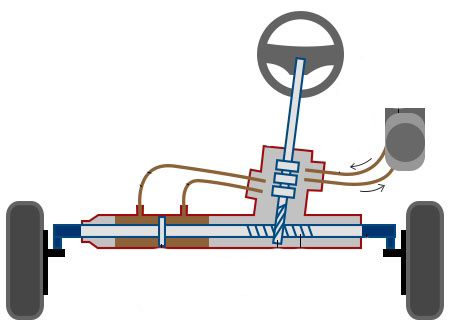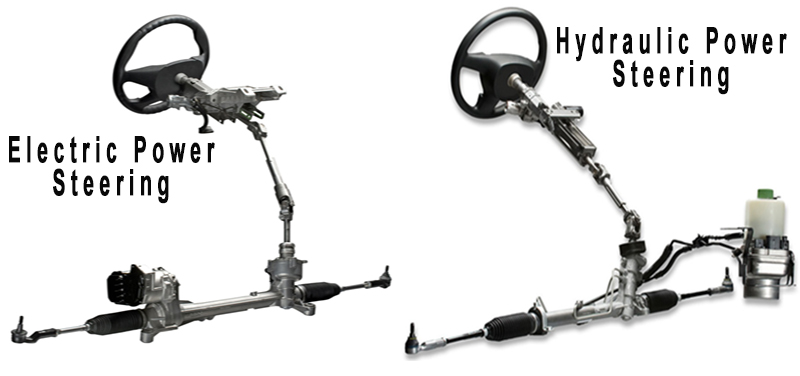Modern vehicles are evolving rapidly, and one of the key systems undergoing transformation is the steering system. The debate of electric steering vs hydraulic steering has become more prominent as automakers strive to improve fuel efficiency, safety, and driving comfort. In this detailed guide, we explore both systems, compare their pros and cons, and help you decide which is the better option for your needs.
Whether you’re considering a new car like the Kia EV5 FWD or checking out the hybrid Kia Sportage HEV, understanding your steering system is key to making an informed decision.
What is Hydraulic Steering?
Hydraulic steering uses fluid pressure to assist the driver’s input. The system includes a pump (driven by the engine), hoses, and a hydraulic cylinder that amplifies the force applied to the steering wheel.
Advantages:
-
Provides better road feedback, preferred by many enthusiasts.
-
Proven technology with decades of use.
-
Handles heavy-duty and off-road applications well.
 Disadvantages:
Disadvantages:
-
Constantly runs off the engine, lowering fuel efficiency.
-
Requires regular maintenance due to fluid leaks and pump issues.
-
Heavier and more complex system.
What is Electric Steering?
Electric power steering (EPS) uses an electric motor instead of a hydraulic system to assist the steering process. The system is controlled by sensors and software, adjusting steering input based on speed and conditions.
Advantages:
-
Improves fuel efficiency since it doesn’t rely on engine power.
-
Easier integration with driver-assist systems like lane keep assist.
-
Low maintenance, as it lacks fluid and belts.
 Disadvantages of Electric Power Steering:
Disadvantages of Electric Power Steering:
-
Often criticized for providing less tactile feedback.
-
More expensive to repair if electronic components fail.
-
Can feel unnatural to some traditional drivers.
Electric Steering vs Hydraulic Steering: Pros and Cons
| Feature | Electric Steering | Hydraulic Steering |
|---|---|---|
| Fuel Efficiency | High (engine-independent) | Lower (engine-dependent) |
| Maintenance | Low (no fluid, fewer parts) | High (fluid leaks, pump wear) |
| Road Feel | Moderate to Low | Excellent |
| Integration with ADAS | Easy | Difficult |
| Cost of Repair | Higher (complex electronics) | Moderate (mechanical parts) |
| Environmental Impact | Lower (no hydraulic fluids) | Higher |
Electric Hydraulic Power Steering: A Hybrid Solution
Some vehicles use electric hydraulic power steering, combining the hydraulic system’s road feedback with the electric system’s efficiency. This hybrid setup allows for power steering assistance without a belt-driven pump, often seen in premium and performance cars.
Electric Hydraulic Power Steering Advantages and Disadvantages:
-
Pros: Better feedback, improved fuel efficiency, flexible system.
-
Cons: More complex, potentially higher repair costs, and not as efficient as full EPS.
Which System is Right for You?
If you value fuel efficiency and modern tech, electric steering might be best. For drivers who prefer a more engaged and tactile experience, hydraulic steering still holds strong appeal. Many newer vehicles like the Kia Sportage Alpha, Kia Carnival Executive, and Kia Stonic EX Plus are equipped with electric steering for better efficiency and safety features.
Check out the full Kia Price List to compare specs and features for models using both systems.
FAQs
Which is better, electric or hydraulic steering?
Electric steering is more efficient and easier to integrate with modern safety systems, while hydraulic steering provides a better road feel. The best choice depends on your driving preferences.
What are the disadvantages of electric power steering?
Some disadvantages include less road feedback, higher repair costs for electronic components, and an artificial steering feel.
What are the disadvantages of hydraulic power steering?
Hydraulic systems require more maintenance, use engine power (lowering fuel efficiency), and are prone to fluid leaks.
Are hydraulics stronger than electric motors?
Hydraulic systems generally offer more torque for heavy-duty tasks, but modern electric systems can be just as capable for most consumer vehicles.
What is the weakness of hydraulic steering?
Its reliance on engine power and susceptibility to leaks and maintenance are key weaknesses.
What is better than hydraulics?
Electric power steering is often considered better in terms of efficiency, maintenance, and compatibility with modern tech.
What is the weakness of electric steering?
Lack of road feedback and high repair costs for electronic components are major concerns.
Can electric steering handle off-road conditions?
Modern EPS systems, especially in vehicles like the Kia Sportage FWD and Kia Sportage L, are designed to handle varied terrain but might not match the raw strength of hydraulic systems for extreme off-roading.
Is electric steering reliable long-term?
Yes, it’s generally reliable and requires less maintenance, but repairs can be costly when needed.
How often does hydraulic steering fluid need replacement?
Typically every 30,000 to 60,000 miles, depending on the vehicle and usage.
Final Thoughts
In the evolving world of automotive tech, both electric and hydraulic steering systems have their place. If you’re exploring efficient and tech-savvy options, electric steering systems in vehicles like the Kia EV5 FWD offer modern advantages. For durability and feedback, hydraulic systems still have loyal fans.
Before making your next purchase, book an online inquiry or service appointment. Don’t forget to explore car protection options like 3M Glass Coating and Undercoating Protection for long-term vehicle care.













